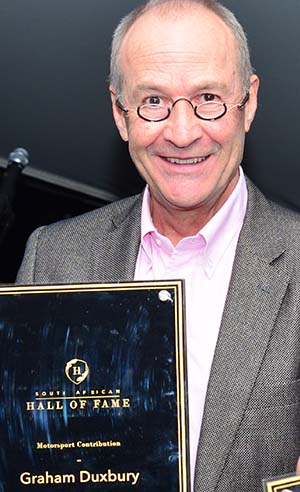March Engineering was a racing car constructor that began operations in the UK in September 1969. It was set up by amateur racing drivers Max Mosley, Alan Rees and Graham Coaker in partnership with engineer and racing car designer Robin Herd. The company name is an acronym of their initials.
 By Graham Duxbury
By Graham Duxbury
After producing their first prototype in 1969, a Formula 3 car, in Coaker’s garage, Mosley announced the most ambitious plan yet presented to the motor racing world. March was going to build cars for customers in F1, F2, F3, Formula Ford and Can-Am (sports cars).
Sceptics did not believe the fledgling constructor was capable of such diversity with some suggesting that March stood for Much Advertised Racing Car Hoax.
Mosley’s next announcement caused a sensation: March would field its own “works” team in F1 and would enter a car for the first Grand Prix of the 1970 season – the South African GP at Kyalami, scheduled for 7 March.
Work started in November 1969 and the March 701, as the F1 car was designated, was launched just over three months later, on 6 February 1970.
The first choice for a driver of the new March 701 was Jochen Rindt. Unfortunately, the talented Austrian was dismissive of March’s F1 project dubbing it “a school-boy’s dream”.
Having failed to secure Rindt, Herd managed to sign Chris Amon – driving for Ferrari at the time – to lead the team.
Then Porsche entered the picture. The German manufacturer needed to find a F1 seat for Joe Siffert, its top sports car driver. This was to prevent him from signing for Ferrari which had both F1 and sports car contracts on offer.
A deal with Porsche saw Siffert become a works March driver. The Porsche payment is said to have contributed significantly to March’s 1970 F1 budget.
It also transpired that Ken Tyrrell, who had won the 1969 World Championship with Jackie Stewart in a Matra powered by a Ford Cosworth engine, was on the look-out for a new chassis.
For the 1970 season, Matra wanted Ken to use its own, newly-developed V12 engine. Ken and Jackie not only trusted the reliable Ford V8, but had a commercial relationship with Ford they did not want to jeopardise.
March presented a solution and two chassis were sold to Tyrrell. Equipped with Ford engines they would be driven by Stewart and Johnny Servoz-Gavin.
Another sensational announcement from March followed: Andy Granatelli the boss of STP, the well-known fuel additive wanted to compete in the ’70 F1 season with Mario Andretti, the legendary US driver and Indianapolis 500 winner. Granatelli chose to purchase his own March 701 – and funded the works team to boot.
So instead of a single car at the SA GP, March had five – two works cars, two Tyrrell cars and one for Andretti.
To many people’s surprise, Amon and Stewart immediately dominated official practice at Kyalami, setting identical fastest laps – 1:19:3. Jackie took pole position for the GP as he had set his time first. The new Marches were ahead of the established front-runners, which was viewed with some incredulity.
This auspicious debut saw the two Marches line up on the front row of the grid alongside the Brabham of Jack Brabham and ahead of the Lotus of Rindt and the Ferrari of Jacky Ickx followed by Denny Hulme’s McLaren, John Surtees’ McLaren and the Matra of Jean-Pierre Beltoise in the then-conventional 3-2-3 grid formation.
Of the other Marches, Siffert had qualified ninth, Andretti 11th and Servoz-Gavin 17th out of 23 starters.
Stewart made an excellent get-away and built an early lead. However, he was driving conservatively, being determined to finish the race. As a result, Brabham took the lead on lap 20, and Hulme passed into second place on the 38th lap of the 80-lap race.
Ickx maintained his position until the flag and took a deserving podium finish.
What of the others? Amon was involved in a first-lap incident and retired with overheating issues. Overheating also plagued Andretti and Servoz-Gavin resulting in their retirements, while
Siffert fought a valiant battle with Ickx and BeItoise before spinning off, recovering to 10th place.
March went from strength to strength, with Stewart triumphant at the next GP in Spain where he not only won but lapped the entire field.
